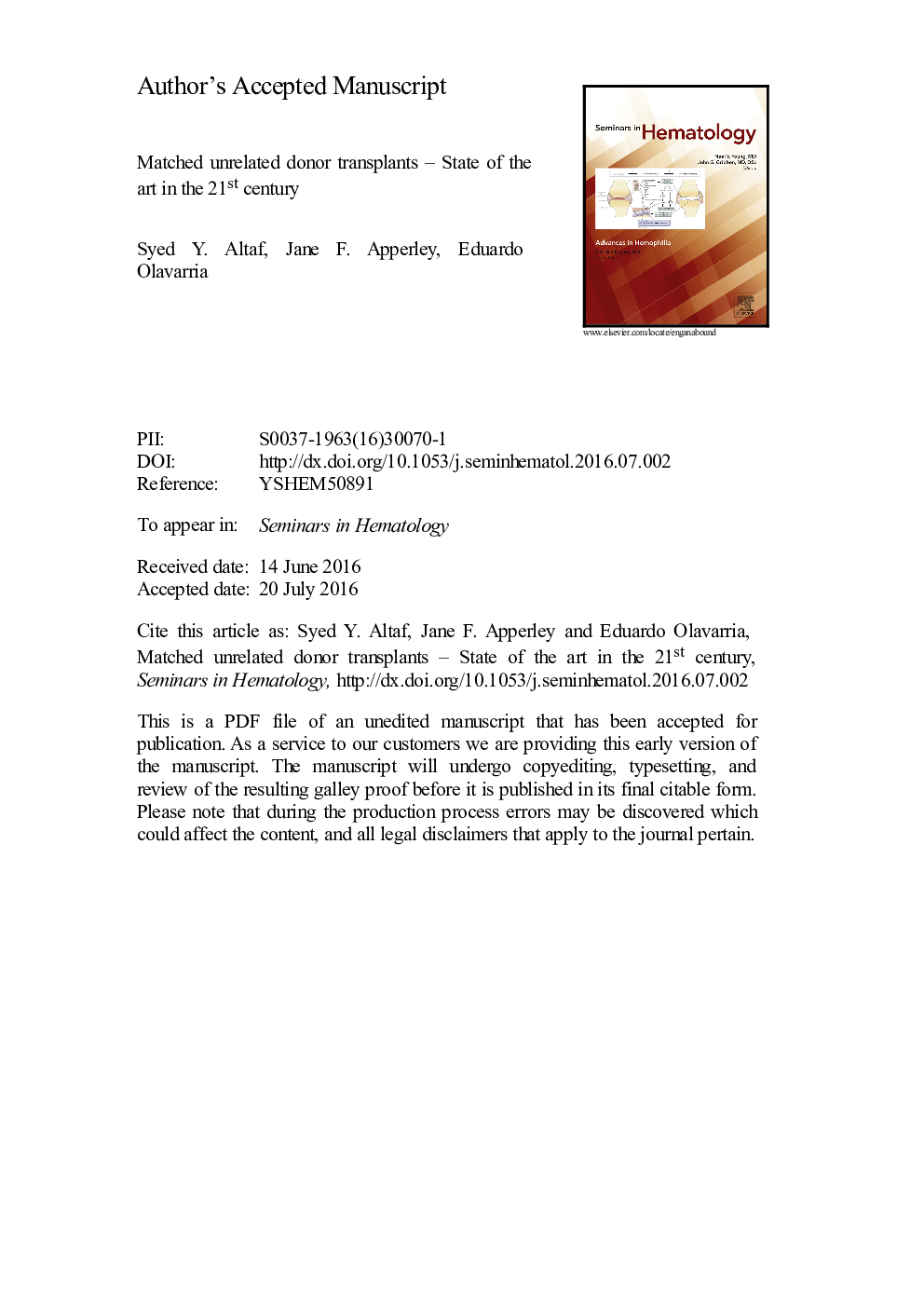| Article ID | Journal | Published Year | Pages | File Type |
|---|---|---|---|---|
| 5664433 | Seminars in Hematology | 2016 | 33 Pages |
Abstract
Hematopoietic stem cell transplantation (HSCT) is the therapy of choice in many hematological malignant and non-malignant diseases by using human leukocyte antigen (HLA)-matched siblings as stem cell source but only one third of the patients will have HLA-matched siblings. Hence, physicians rely on the availability of matched unrelated donors (URD). The possibility of finding a matched URD is now more than 70% due to continuous expansion of URD registries around the world. The use of URD in adult patients is steadily increasing and in the last 8 years has superseded the numbers of matched sibling donor transplants and has become the most commonly used stem cell source. There is also an increasing trend to use peripheral blood (PB) stem cells rather than bone marrow (BM) stem cells. Outcomes following URD transplants depend mainly upon the indication and urgency of transplant, age and comorbidities of recipients, cytomegalovirus (CMV) matching/mismatching between donor and the recipient, and degree of HLA matching. In some studies outcome of unrelated stem cell transplants in terms of treatment-related mortality (TRM), disease-free survival (DFS), and overall survival (OS) is comparable to sibling donors.
Related Topics
Health Sciences
Medicine and Dentistry
Hematology
Authors
Syed Y. Altaf, Jane F. Apperley, Eduardo Olavarria,
